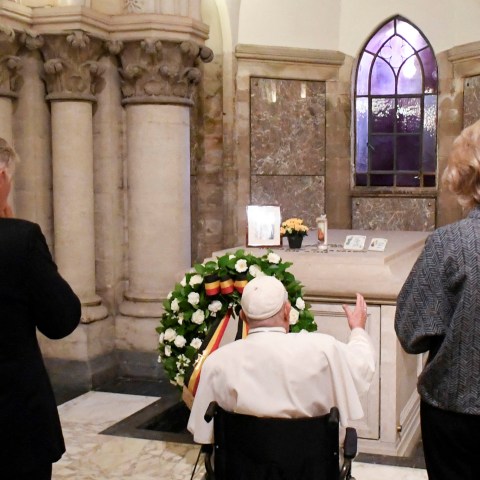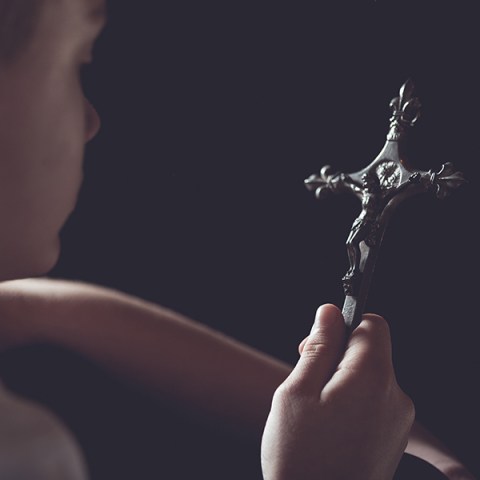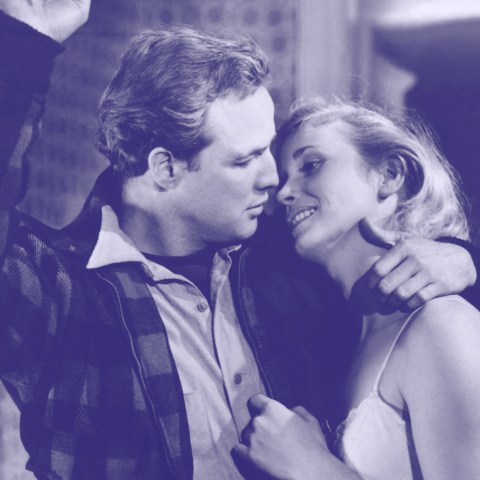We live in a “time between” the comings of Jesus, who, Scripture tells us, could come at any moment.
Stay awake and be ready!
For you do not know on what day your Lord will come.—Entrance Antiphon for the 32nd Sunday in Ordinary Time, based on Matthew 24:42a, 44
Like many early Christians, including St. Paul and the people of Thessaloniki, the Evangelist Matthew and his community would probably have struggled to reconcile their hope for the return of Jesus with their disappointment that it hadn’t happened yet.
For most of us, the eschaton—the Second Coming of Christ and the Final Judgment—is an uncomfortable topic that might even smack of religious fanaticism. After all, how often have we dismissed religious leaders and self-proclaimed “prophets” who have declared that Jesus will return at a specific time and place?
And yet, each Sunday, as we profess in the Nicene Creed, we declare our belief that “he will come again in glory to judge the living and the dead.” The Catechism of the Catholic Church develops this fundamental Christian doctrine when it says,
“Since the Ascension Christ’s coming in glory has been imminent, even though ‘it is not for you to know times or seasons which the Father has fixed by his own authority’ (Mark 13:32). This eschatological coming could be accomplished at any moment, even if both it and the final trial that will precede it are ‘delayed’” (§ 672).
All of this leaves us waiting, living in a sort of “time between” the comings of Christ. This Sunday’s Readings and the end of the Church Year provide us valuable lessons on what this time of waiting means for us.

Read more:
Do I believe in the resurrection of the dead?
If we look closely at the First Reading and the Gospel proclaimed in this Sunday’s liturgy, we notice a common element in both passages: the dark of night. The First Reading describes the Wisdom of God in poetic terms (and in this sense we can understand “Wisdom” as being the embodiment of God’s Revelation and even as an image of Christ, the “Wisdom of God”) and teaches us that our entire lives should be spent seeking her: “She hastens to make herself known in anticipation of their desire; Whoever watches for her at dawn shall not be disappointed, for he shall find her sitting by his gate” (6:13-14). The seeker looks for her in the darkness of night only to discover, when dawn comes, that Wisdom has been waiting for the seeker all the time.
The image of night is even more clear in the well-known Parable of the 10 Bridesmaids we hear in the Gospel. As the bridesmaids wait for the arrival of the bridegroom—who is late for the wedding banquet, which can’t begin without him—night descends and the women are left dozing as they wait. Their lamps begin to flicker and go out and only half of them had the foresight to bring extra oil, despite the inconvenience and expense that would cause. But, when the bridegroom arrives in the middle of the night, those wise women were able to greet him and they were welcomed into the wedding banquet, while the unwise and unprepared bridesmaids were left out in the dark.
Reflecting on the image of night found in these two texts, liturgical scholar Adrian Nocent, OSB, wrote, “The bridegroom comes at night. In the Scriptures, the night is the time of God’s comings … When the New Testament looks forward to the return of Christ, it regularly thinks of it as occurring in the night (cf. Luke 12:39-40; Matthew 24:43-44; Mark 13:35-36, etc.). Those who wait must not sleep but keep vigil for the bridegroom comes unexpectedly” (from The Liturgical Year).
In these cold, dark days of autumn, we are surrounded by death, decay, and darkness as nature enters into its winter rest and the days become shorter and shorter as the light fades. The cold and darkness of the natural world are a symbol of the cold and dark that surround us as we think of the suffering and want that fills the world and even our own spirits, at times.
Recognizing the reality of the darkness that envelops us, the readings this Sunday remind us of two important points. First, we aren’t supposed to simply surrender ourselves to the dark. Instead, we are being asked to watch and wait. Second, we trust that the darkness is not the end. The dawn will come and with it the Bridegroom who will invite us into eternal banquet of the Reign of God.
How do you experience “cold” and “darkness” in your life? Who or what provides points of light and warmth for you?
What does “waiting” for Christ mean for you?
How is the prudence and discernment of the “wise” bridesmaids a lesson for you as you live your faith in this “time between” the Comings of Christ?
Words of Wisdom: “Faith in Christ has never looked merely backwards or merely upwards, but always also forwards to the hour of justice that the Lord repeatedly proclaimed. This looking ahead has given Christianity its importance for the present moment.”—Pope Benedict XVI in Spe Salvi, 41








